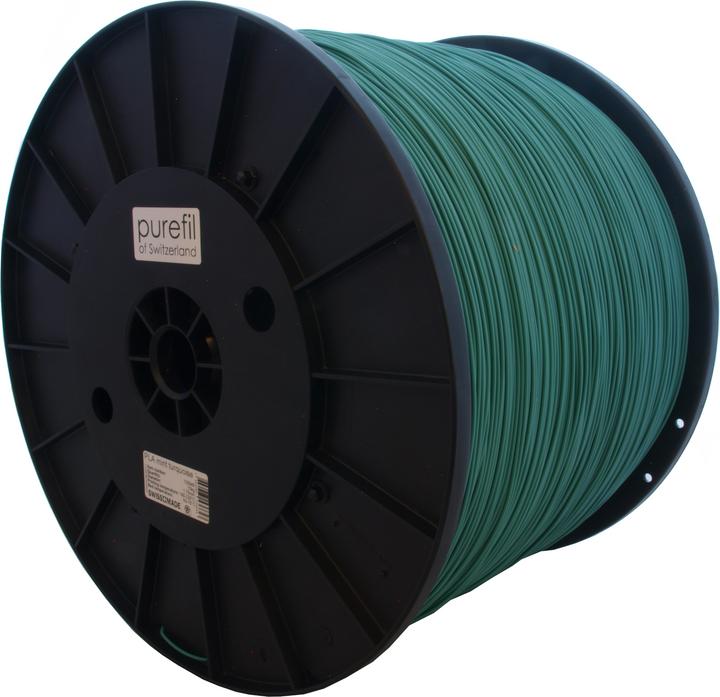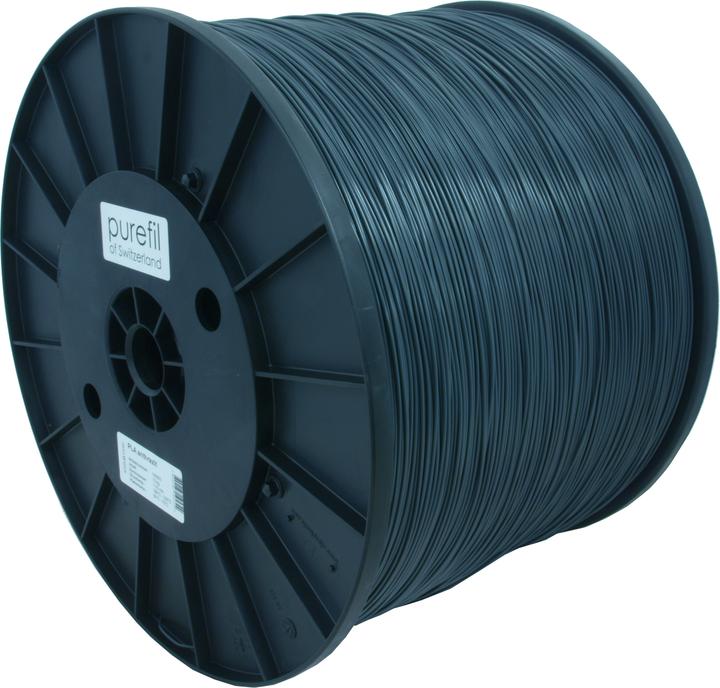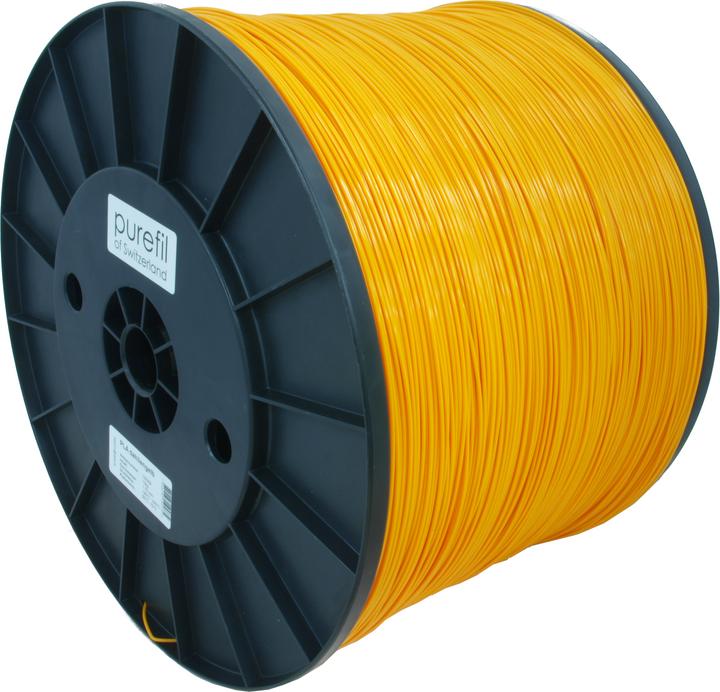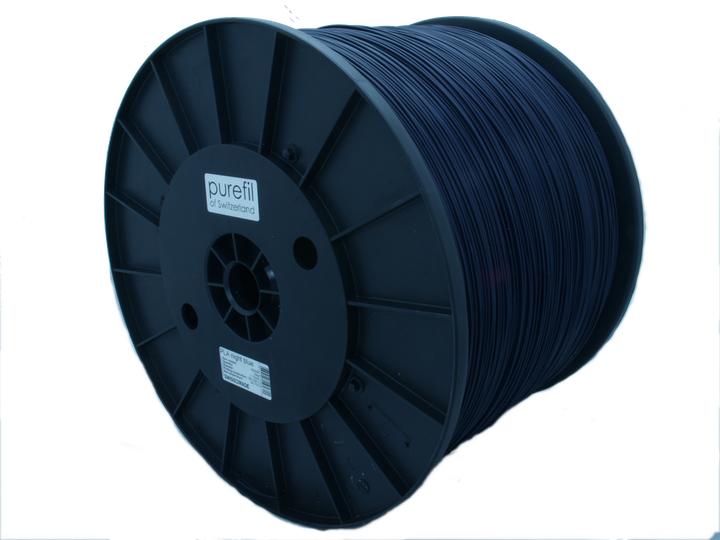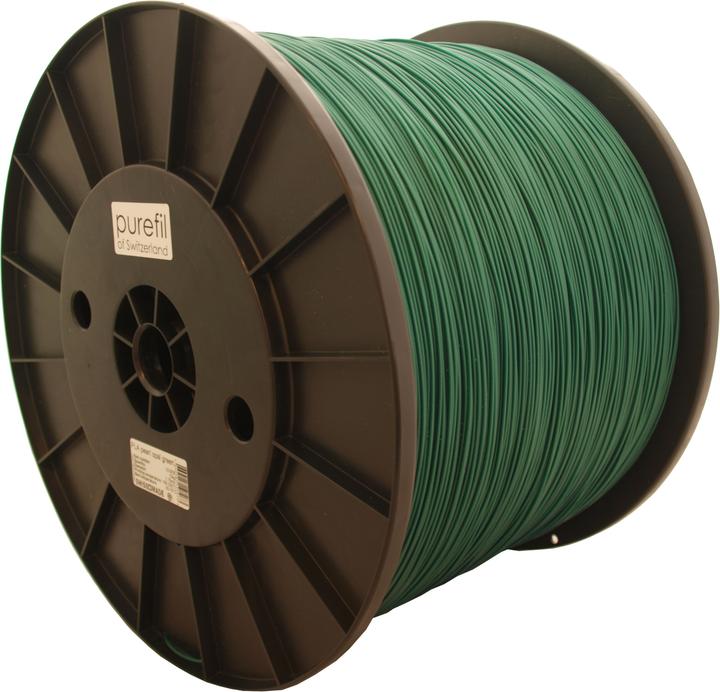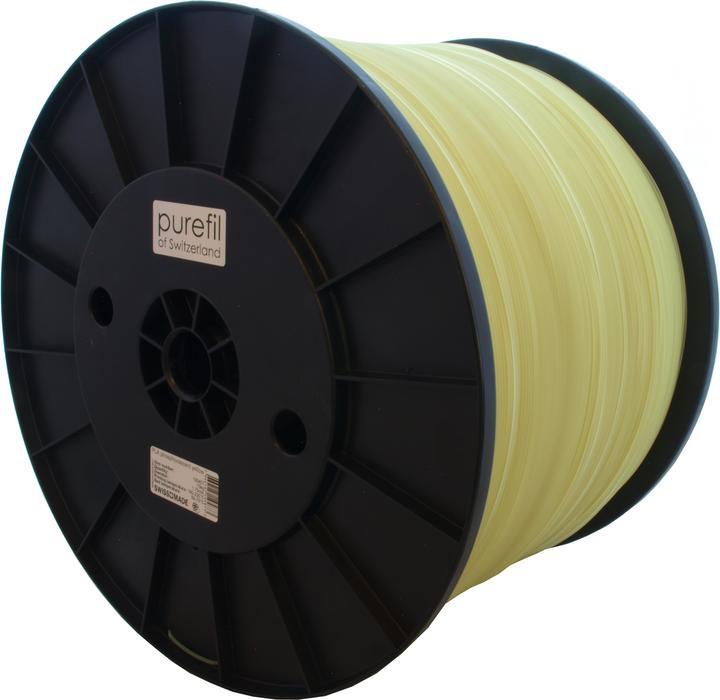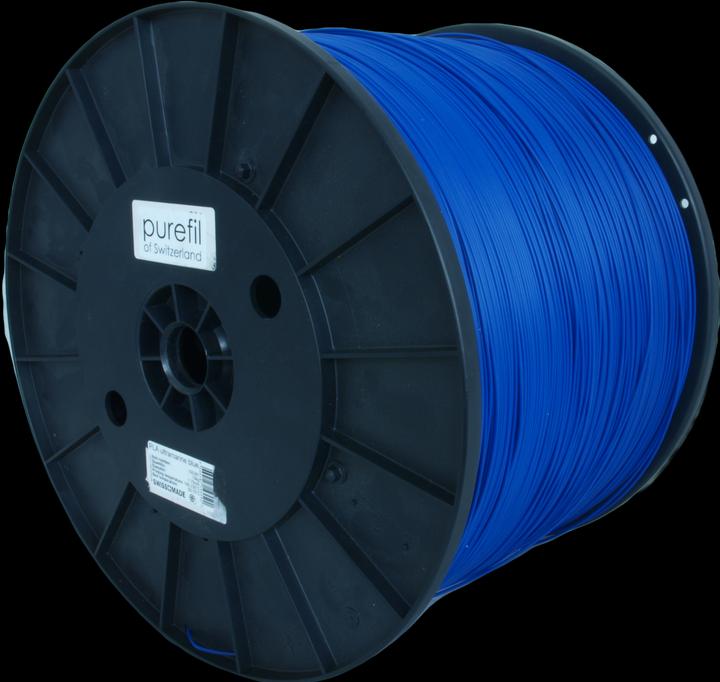Purefil PLA filament
PLA, 1.75 mm, 10000 g, GreenOnly 1 piece in stock at supplier
Colour7
Product details
The use of high-quality raw materials creates a 3D printer filament that is particularly easy to process. Using a state-of-the-art manufacturing process, very low manufacturing tolerances are achieved, leading to convincing printing results with all FDM 3D printers. Each coil is sealed in a high-quality bag.
- Made in Switzerland
- Small diameter and roundness tolerances
- Easy to print
Polyactide is a polymer that consists of lactic acid molecules, among other components. We currently have PLA filament in 1.75 mm and 2.85 mm in our range. A heated bed is advantageous for PLA filament, but not essential. We recommend using an air cooler when processing PLA filament. Furthermore, PLA is characterized by a more pleasant odor during processing compared to other plastics. However, the temperature below which PLA starts to soften is relatively low. Even at high temperatures in summer, PLA parts can deform. As a starting material, PLA is basically biodegradable under special conditions. However, the final product contains pigments and additives, so PLA parts must still be disposed of in the garbage and not in the garden.
This filament meets the compositional requirements of European Regulation No. 10/2011 on plastic materials intended for food contact.
Characteristics:
- Minimal shrinkage
- Little delay
- Low water absorption
- Soluble in many organic solvents
- High UV resistance
- Low flammability
- Heat resistance up to approximately 60°C
PLA filament or polylactide is biodegradable, but certain environmental conditions are necessary, which can usually only be found in industrial composting plants. PLA does not normally decompose in nature, so we do not recommend composting PLA filament or printed parts made of PLA.
Colour | Green |
Item number | 21373512 |
Manufacturer | Purefil |
Category | 3D printer filament |
Manufacturer no. | 100948 |
Release date | 30.6.2022 |
Colour | Green |
Exact colour description | Mint turquoise RAL 6033 |
Print material | PLA |
Thickness | 1.75 mm |
Max. Print temperature | 230 |
Country of origin | Switzerland |
CO₂-Emission | |
Climate contribution |
Weight | 10000 g |
Compare products
Goes with
Reviews & Ratings
Warranty score
How often does a product of this brand in the «3D printer filament» category have a defect within the first 24 months?
Source: Digitec Galaxus- 1.Creality0 %
- 1.Polymaker0 %
- 3.Purefil0.2 %
- 4.FlashForge0.7 %
Warranty case duration
How many working days on average does it take to process a warranty claim from when it arrives at the service centre until it’s back with the customer?
Source: Digitec Galaxus- PurefilNot enough data
- 3DoodlerNot enough data
- AnycubicNot enough data
- AzureFilmNot enough data
- Bambu LabNot enough data
Unfortunately, we don't have enough data for this category yet.
Return rate
How often is a product of this brand in the «3D printer filament» category returned?
Source: Digitec Galaxus- 6.Filapen0.5 %
- 6.FlashForge0.5 %
- 6.Purefil0.5 %
- 12.Elegoo0.6 %
- 12.eSUN0.6 %
